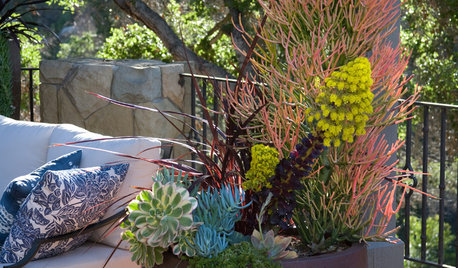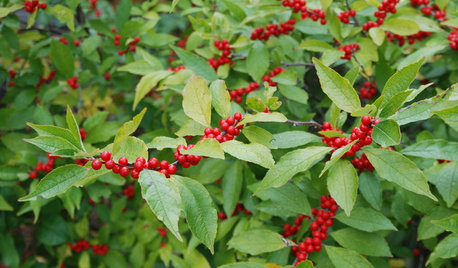I decided to make a new post and not only give an garden update but answer a few questions asked on other threads I haven't got back to.
We had a high of 81 yesterday with a predicted high of 88 today. Just looked at the 7 day forecast from the NWS and it doesn't show a single day with 100 or more predicted. The predicted high is 98 on one day. And chances of moisture a few times during that time frame.
The heat has took it's toll on my garden. I would be denying the truth if I said otherwise. Any shade has made a difference. Some varieties have done a lot better than others. Overall I'm pleased. If I had it to do over I would of waited at least another two weeks before planting seeds for the late garden. Have battled several issues. And many of the plants germinated and then just set there not growing. Also it made it very hard to keep up with watering. I gambled on the temps moderating some and the potatoes and onions maturing and none of the 3 occurred.
The Fowler bush beans have been the only producer so far. I'm impressed with them. Haven't ate any yet as I'm letting some mature for seeds first. Some of the rest of the bush beans have grown well but not set many if any beans. The pole beans overall are growing slow and looking good but haven't set any beans. Chandra's cluster beans germinated well and so far haven't flinched in the heat.
Okra has raised several questions. I finally had decent germination of Stewart's Zeebest. The plants have started producing at a foot or less of height and are still very small. I have them spaced 4 ft a part. I cut the small okra off hoping they will start growing. About to decide that it doesn't tolerate heat/drought well. Several of the other varieties in the same area are growing well. So hopefully will be harvesting some soon.
The potatoes are showing signs of dieing off. Not sure what kind of production I will find. The few plants I have dug had good numbers of tubers but smaller.
It appears within 7-14 days the rest of my onions will be maturing. I left a few that bolted due to the heat for seed. Have never tried that before. I had mentioned the bolting earlier. It has continued up till now. I pulled a few this past week. I've learned extreme temps even high can cause it. It looks like the Bronze D' Amposti will be the best red tinted onion I've grown. Good size and mild flavor. I will post some pictures later but some are sizing up very well. The onions I started from seeds from CO look like they will make large bulbs when finished. But too early to make a fair judgement. The Candy onions have been maturing for 5 weeks now. And still some that haven't fell over. All from the same Dixondale bunch and planted the same day. Go figure.
Sweet potatoes have took off and loving the heat.
The Burrell's cantaloupes are outperforming the other variety I planted. The plants have several little loupes and growing everyday.
Cukes struggled for a while with the heat. But most took off in the last week. I should start picking some within a week. The spaghetti squash has gone bonkers. They have some afternoon shade which may contribute to that. The regular squash has been steady but not real prolific yet. I feel the heat is limiting production somewhat. The cornfield pumpkin of George's took off big time and has stalled. Hoping the cooldown will trigger it to take off again.
Overall peppers have done better than I expected. Some sunburn and a few had BER. Overall way more fruit set on the bell peppers than normal for being as hot as it is. The chile and jalapeno types have done very well. I picked some nice ones Friday evening. The new to me variety Mosco so far is very impressive. What I would call a medium sized chile type, fleshy with excellent flavor and above average heat. Two of the varieties that Chandra sent are setting very well. One is loaded. Many of the others are doing well.
This year I planted my celery in a five gallon bucket and will move it too the lean to in the fall. So I'll have fresh celery for stews, ect this winter. I have kept it on the north side of the house where it receives shade and it has done well. I will post some pictures later.
This brings me to the tomatoes. The last two weeks has been hard on those in the main garden. I have yanked over 1/3 of the plants. And I would conservatively say the plants I removed had 5-6 hundred half grown or larger fruit. I went back to spraying last week. I have sent off 4 plants to the KSU diagnostic lab. To answer a question of Dawns. I feel 3 of them are separate diseases and two are either the same or very similar. I received an email from the lady checking the first two plants. Said both arrived in good shape. That she had ruled out some things but couldn't confirm anything by visual and was waiting on some tests. She feels fairly certain it isn't a viral disease. And from her comments I have the feeling she feels there may be more than one culprit. At least I feel a little better now that I couldn't diagnose either plant visually. Dawn one of the plants I sent of yesterday has wilt. It was a Jet Star plant. Loaded. Looked good last Sunday. Noticed first signs mid week. Over 6' tall. They want you to send the whole plant. I knocked several fruit off. Getting it removed and packaged. Weighed over 30 lbs. I feel it is either verticillium or fursarium wilt. Both of which Jet Star has at least some resistance too. I skinned the lower main stem a little accidentally in handling and saw the first inner layer was brown. But just wanted to verify it as I've had 3-4 others with it that I have already removed and a couple late last fall. And at least half of them are supposed to have some resistance to both. Just want to make sure there isn't another problem. I yanked another plant last night. I have no intentions of sending anymore. Unless I see something I feel is different and like the first two I just don't feel comfortable with diagnosing or after the results come back they see a need too. These plants are in an area where I haven't had tomatoes in at least 3 years. I didn't soak all my seeds before planting this year in clorox but will next year. My goal is too confirm for sure what issues I'm facing. Then to try to decide on a plan of preventative measures for next year. The obvious septoria problems , ect I didn't send in. Just the plants that basically I was confused about. Still have a fair amount of tomatoes on the vines. Picked 30 or so last evening. Most of the later planted plants are looking good and starting to set. Randy's Brandy is continuing to impress. There are some more that I've been impressed with. I will do a full tomato review a little later. I'm starting on my 013 list. And will try to stay closer to it this year than I have in the past. Will be a lot fewer varieties. And the results of the tests will determine a lot. Camo made a post about his grafted plant at a few sites. He is impressed. Assuming I can get my healing chamber issues addressed I will be planting up to 50% grafted plants next year. The one has really impressed me this year.
My sweet corn is finished. I had 4 varieties of late season corn. One filled excellent, one fair and two were 40% or less. Whether it was a timing issue with the heat or that one variety handles the heat better I'm not certain. I will eliminate two varieties though. Vision and Mirai 421 were very good. Vision filled the best.
Again hope to see others results and impressions from this year. Jay
















chickencoupe
Okiedawn OK Zone 7